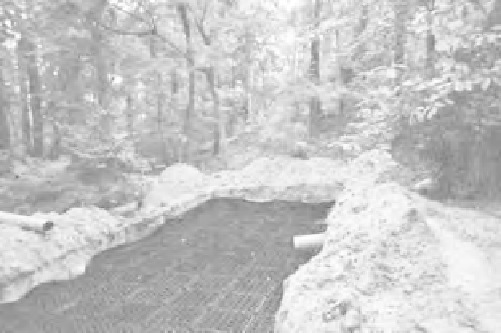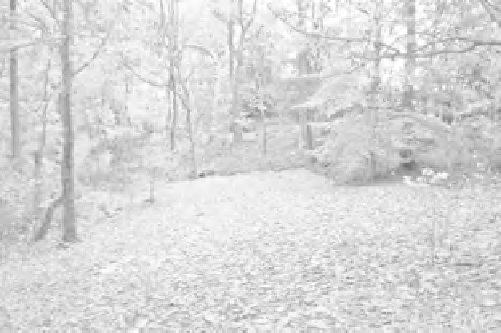Environmental Engineering Reference
In-Depth Information
(A)
(B)
Figure B-34
Infiltration bed build in the wooded hillside with plastic storage units.
to suburban residential. The Village at Springbrook Farm is a 259-unit develop-
ment with 149 townhouses, 96 quads, and 17 single-family homes, advertised
as a LID community in Campbelltown, near Hershey, Pennsylvania. The site
design approach was to keep the rainfall as close to the buildings as possible and
infiltrate. The site overlaid a carbonate aquifer, and the issue of sinkhole forma-
tion influenced the placement of all stormwater infiltration beds, with potential
locations carefully avoided. Some 124 infiltration beds were situated through-
out the site, under porous pavements, driveways, sidewalks, and open spaces
(Figures B-36 and B-37). Since the regional water supply is drawn from the
limestone aquifers, this design represented recycling of all incident rainfall for
withdrawals by wells. For the single-family residential units, rain gardens were
used for rooftop infiltration (Figure B-38). This design met with initial resistance
from homebuyers until the vegetation became an aesthetic benefit to the units.













Search WWH ::

Custom Search